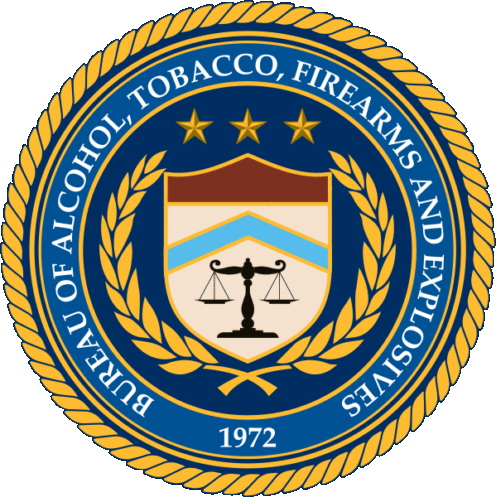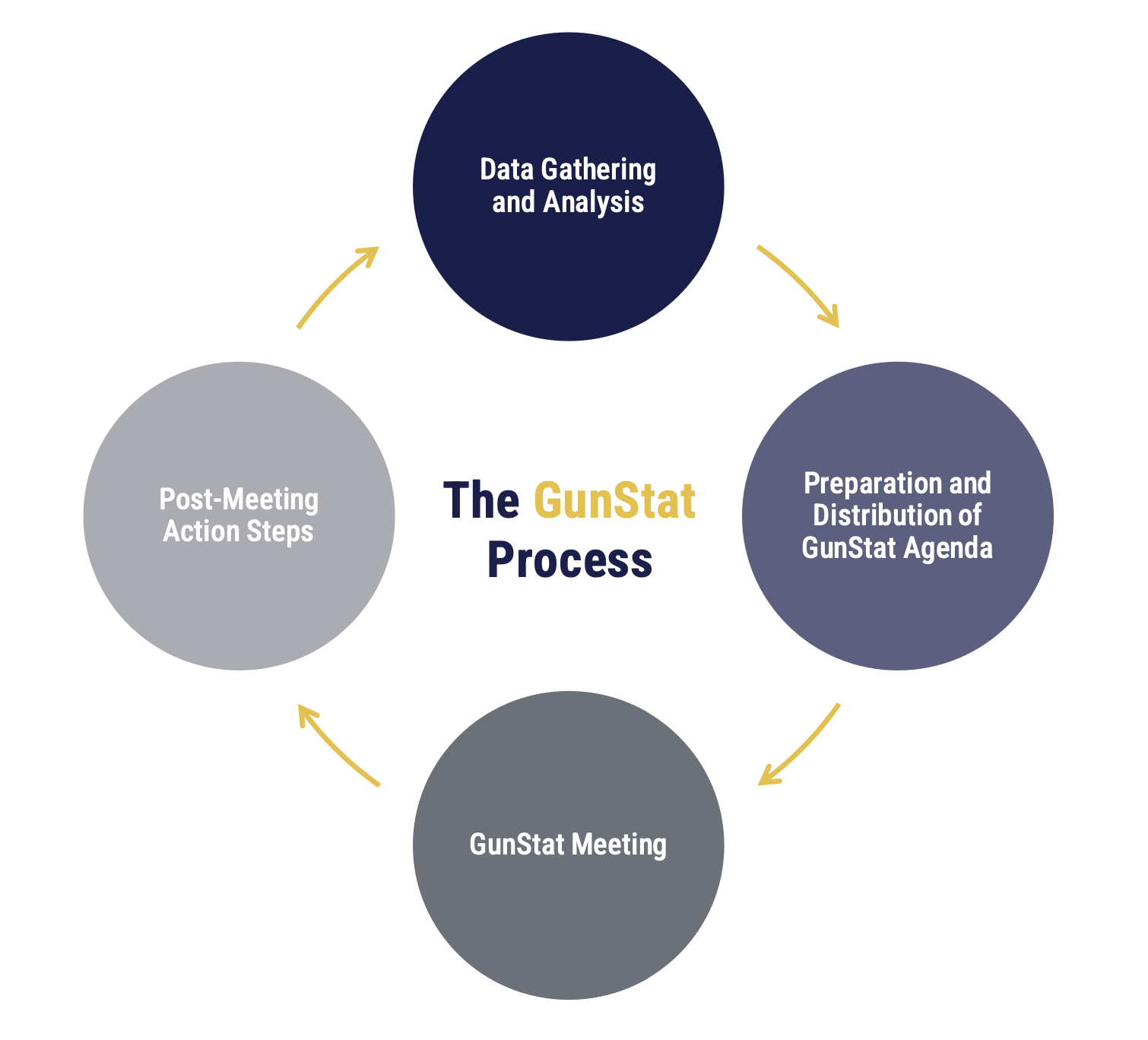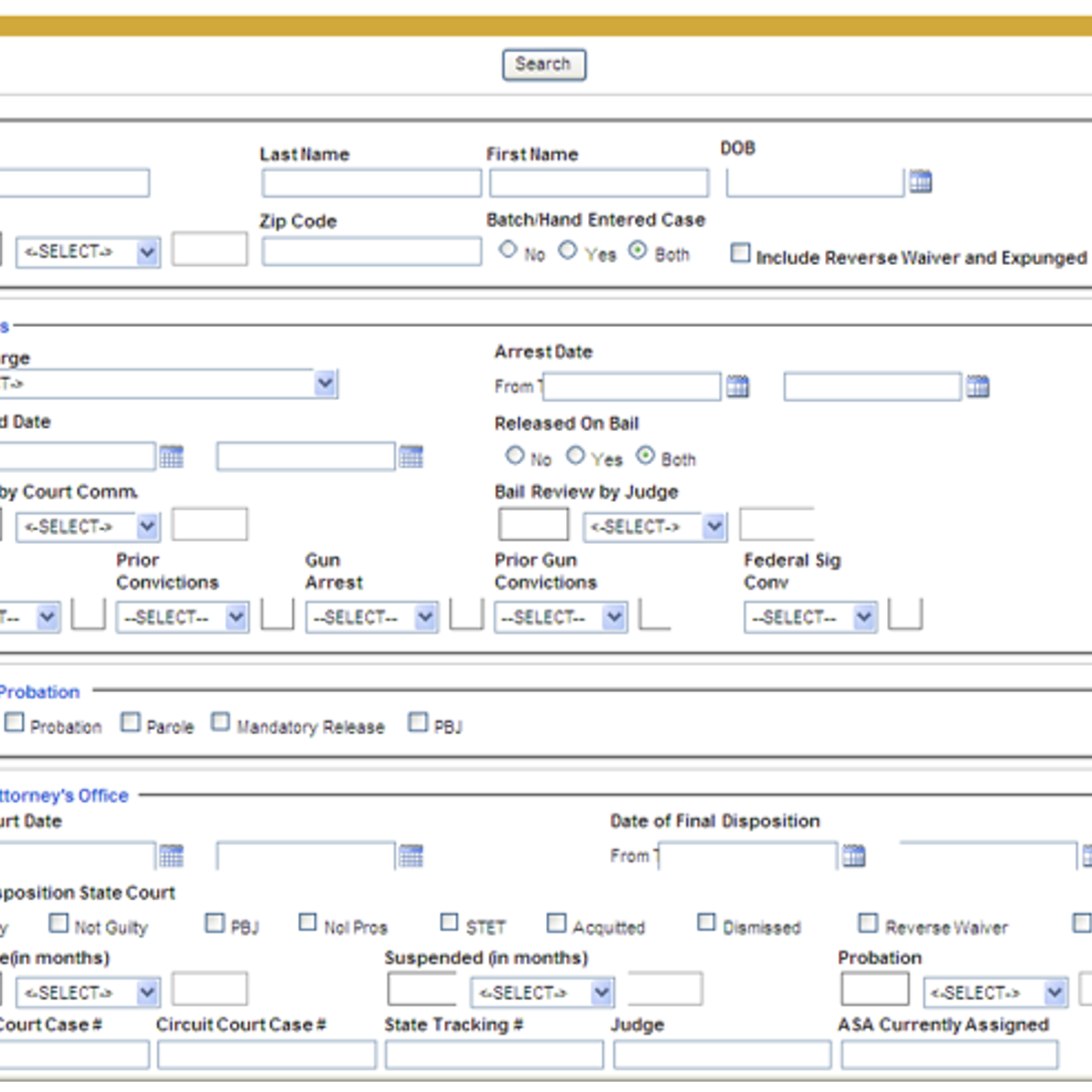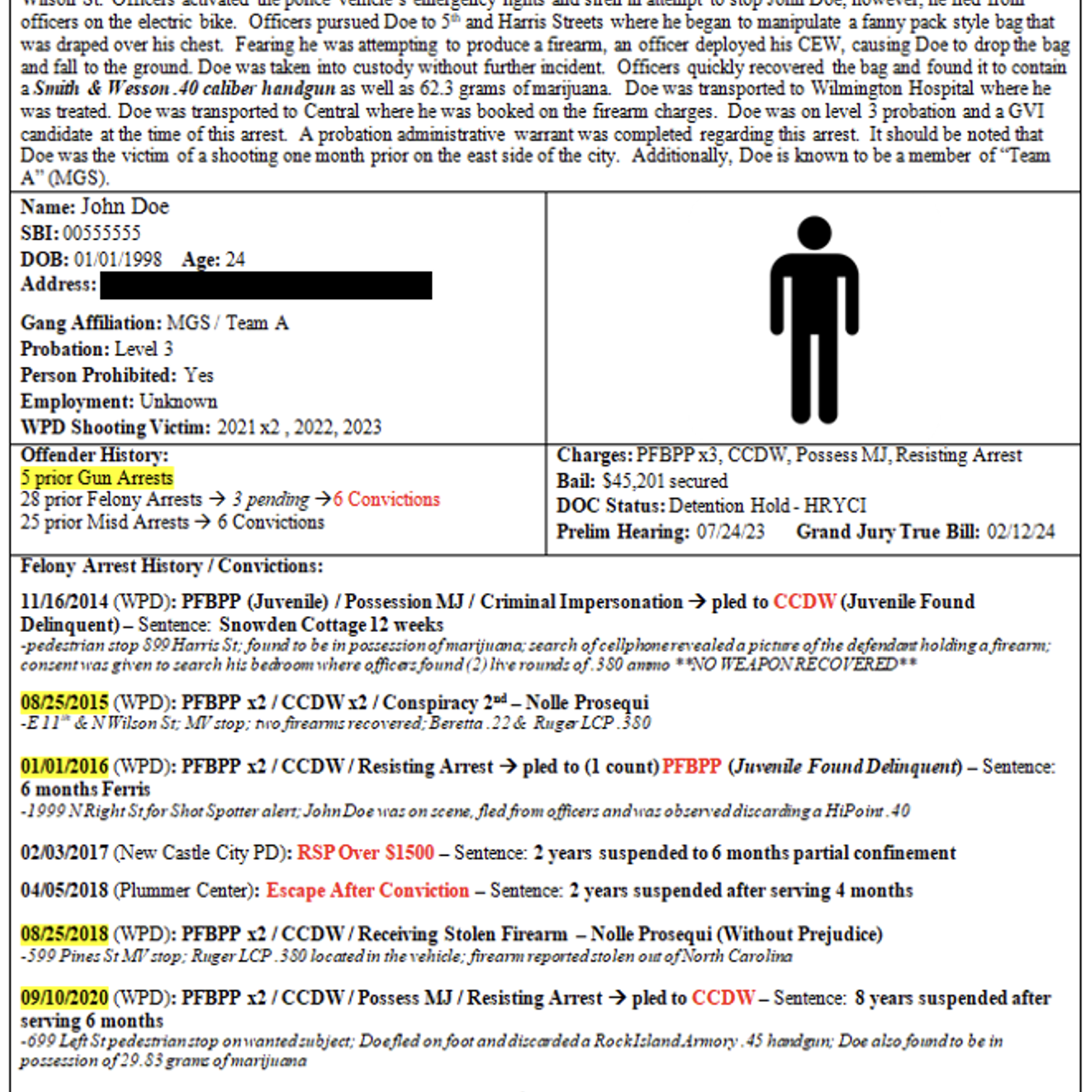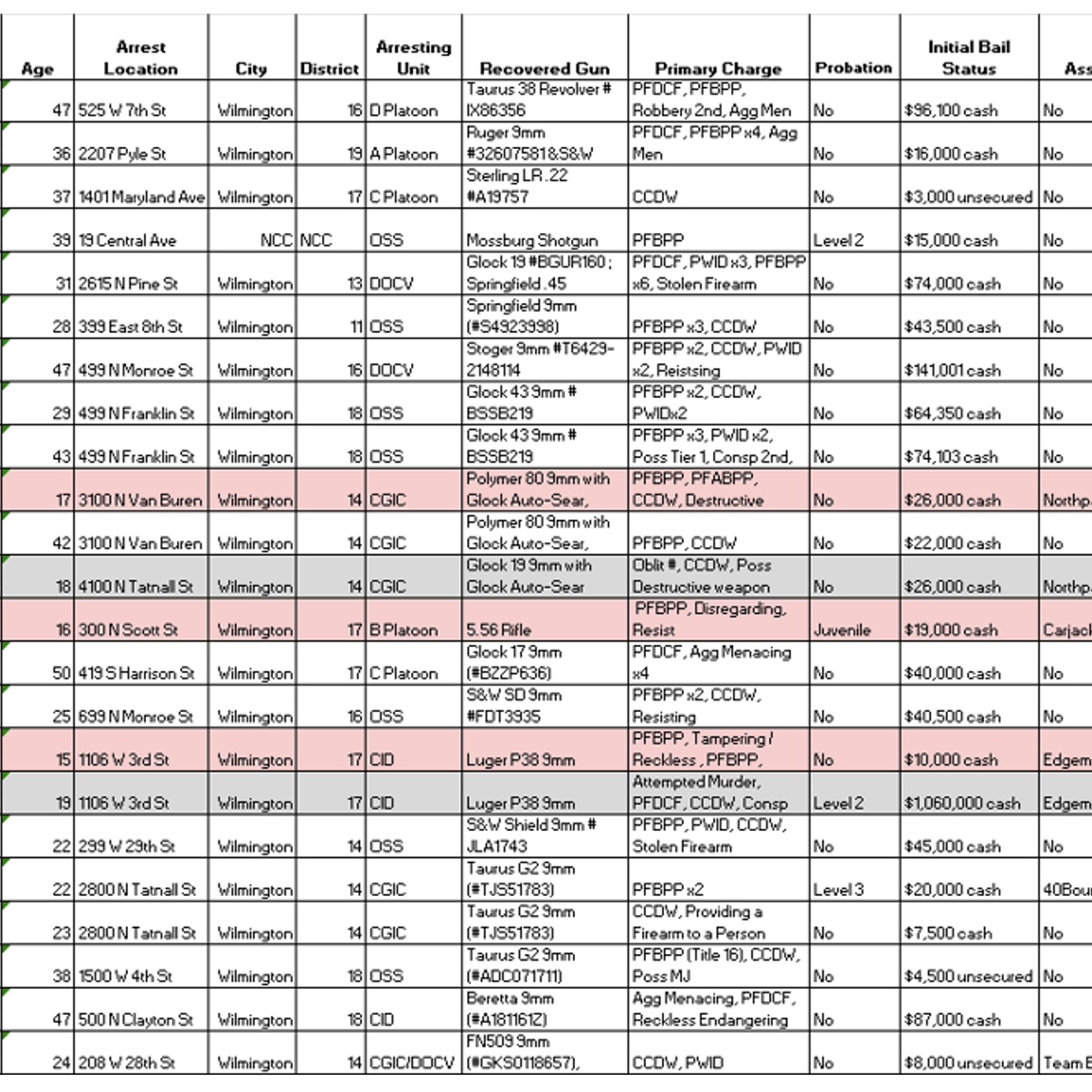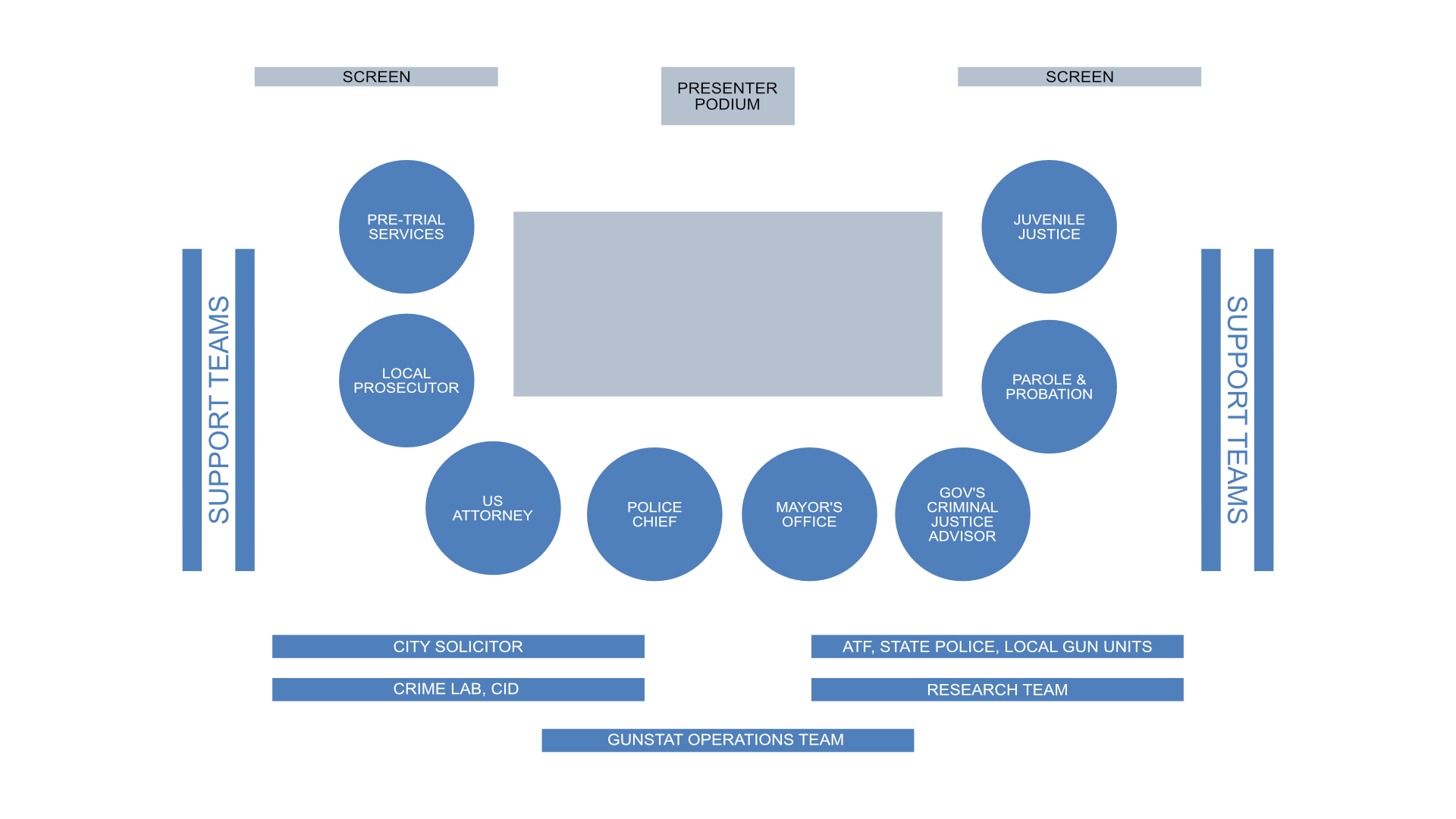The GunStat Process
The GunStat model provides a process for sharing data systematically, discussing challenges collaboratively, and leveraging existing resources to disrupt gun offenders. The process involves readily collecting and distributing data between agencies, analyzing trends in gun cases, and regularly meeting to review cases and discuss challenges.
The GunStat process begins with the gathering and analysis of gun-related data. Many jurisdictions initiate this process by monitoring daily gun arrests. These gun arrests are methodically screened for federal prosecution and evaluated by trained crime analysts to identify patterns, trends, and anomalies within gun cases. The analysts use cross-agency data to examine the offender's criminal history, National Integrated Ballistic Network (NBIN) patterns, and conditions of bail, probation, and parole.
Data Gathering and Analysis
Preparation and Distribution of the GunStat Agenda
During the second stage of the process, the GunStat coordinator works with analysts to prepare an agenda for the regularly scheduled GunStat meeting. The agenda often focuses on case reviews of recent gun arrests. It is important that the agenda identifies the specific gun cases that will be discussed during the meeting. Additionally, the agenda can be used to identify other points of discussion related to specific issues, challenges, and benchmarks. The agenda is then circulated to all the GunStat agencies, giving them adequate time to prepare for the GunStat meeting.
The GunStat Meeting
The GunStat meeting is designed to be a roundtable discussion based on the distributed agenda and should be facilitated by the GunStat coordinator. The meeting traditionally focuses on a case review of recent gun arrests, in which participating agencies take the lead by presenting different components of information.
Post-Meeting Action Items
In Baltimore, a series of GunStat meetings focused on trends in gun cases that resulted in a declination to prosecute. Through analyzing the data, it was determined that many of these cases were related to challenges associated with the collective possession of a particular firearm. In these situations, patrol officers were making arrests after recovering an illegal firearm that was in the collective possession of several people, usually in a vehicle or residence. GunStat discussions focused on strategies to address this issue through improving patrol officers' training.
As part of the follow-up process, the prosecutor’s office implemented a comprehensive training program on search and seizure guidelines for patrol officers throughout the agency. The training progress was tracked by a manager in the prosecutor’s office, who provided regular updates during future GunStat meetings. After implementing the training, additional data analysis revealed a substantial drop in declinations to prosecute gun cases related to collective possession issues.


